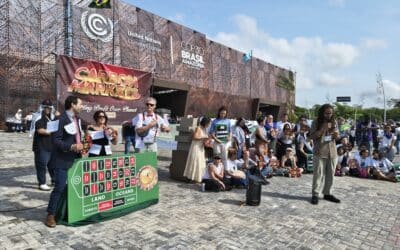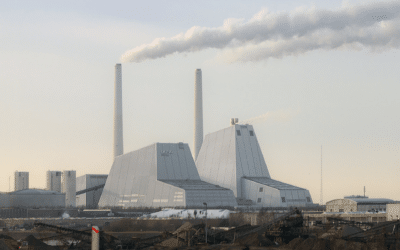Guest article by Gary Hughes, Biofuelwatch, and Oli Munnion, Global Forest Coalition
Despite the evidence exposing the harms of monoculture plantations to communities, water resources, biodiversity and the climate, proponents of ‘Carbon Dioxide Removal’ (CDR) continue to commercially and politically support the expansion of monoculture plantations of exotic tree species as a climate solution.
Every year on September 21, the World Rainforest Movement leads a global day of action known as the International Day of Struggle Against Monoculture Tree Plantations. In recognition of this annual effort for organizations, networks and movements to celebrate resistance to industrial tree plantations, we are publishing this short piece that explores the dangers and threats of characterizing monoculture plantations as a viable means of responding to climate change.
As polluters increasingly turn to geoengineering as a means of addressing the looming impacts of climate change, it is crucial to highlight the social and environmental impacts of plantations of exotic tree species. It is an imperative to challenge the means by which the damage of industrial tree plantations is being obfuscated by actors in the pulp, paper, biomass and wood products industry, who have fully embraced the narrative and tactics of CDR as a means to greenwash the invasion of monoculture plantations on territories, landscapes and communities.
CDR Afforestation and Reforestation Projects Continue to Proliferate
One of the more blatant manipulations of public concern about climate change has been the manner in which the wood products industry has utilized the narrative of CDR to justify planting exotic tree species plantations, such as eucalyptus, as a climate solution. This turn of language is, in simple terms, just a rebranding of industrial plantations as a ‘carbon sink.’
Plantations, however, are not a climate solution; they are central to the causes of the climate and biodiversity crises. Nevertheless, afforestation (the planting of trees in landscapes that were never forested in the first place) and reforestation (which could include the replanting of native tree species but has proven to be coded language for the aggressive establishment and perpetuation of industrial exotic tree species monoculture plantations) is by leaps and bounds accounting for the large majority of CDR credits being commercialized as offsets on voluntary carbon markets.

As evidence for this claim, the State of Carbon Dioxide Removal report, which describes itself as ‘(T)he first accessible, global and independent scientific assessment of carbon dioxide removal,’ differentiates between ‘conventional’ and ‘novel’ forms of CDR. Their second edition report, published in 2024, is quite clear in stating that some 99.9% of all CDR over the past decade has been done so through ‘conventional’ CDR methods, which are primarily ‘afforestation/reforestation’ projects. Therefore, understanding ‘afforestation/reforestation’ as being essentially monoculture tree plantations, nearly all of the CDR that has been theoretically delivered in the real world has been done so using industrial plantations.
On top of this, the report highlights how Bioenergy with Carbon Capture and Storage (BECCS) and Biochar projects currently account for 97% of “novel” CDR. Both of these approaches involve burning biomass (usually wood) in order to capture carbon, and their deployment at scale would require a huge expansion of monoculture tree plantation areas. This damning data comes from the work of strong CDR proponents, not from climate justice activists. What is clear though is that industrial tree plantations are indisputably central to CDR.
Unfortunately, the authors of the State of Carbon Dioxide Removal report fail to recognize the well-known environmental and social harms that large-scale monoculture plantations are responsible for, much less propose ways of addressing those harms or reconsider whether or not therefore that CDR is at all a viable climate solution.
What “conventional” CDR looks like: Pulp and Paper Industry Relies Heavily on Carbon Removals to Justify Destructive Expansion
South America has, over decades, become ground zero for the monoculture tree plantation model, largely to provide feedstock and raw material for the pulp and paper, wood products and biomass energy sectors.
Currently, the sector is dominated by a handful of transnational corporations that clearly rely heavily on plantations for their operations, that has resulted in millions of hectares of land being converted to monoculture plantations over recent decades. A number of fast-growing species are utilized for plantation forestry, but eucalyptus has become one of the most extensively planted species.
The pulp, paper and biomass energy sector continues to expand on a massive scale. One worrisome example is that of the company Arauco, a Chilean transnational corporation that has land and operations in many countries in Latin America, including Chile, Argentina, México, and Brazil.
Arauco is now moving forward with its plan to build Proyecto Sucuriú in Mato Grosso do Sul, Brazil, which would be the largest pulp plant in the world and cost more than US$4.5 billion to construct and put into operation. A 400+ MW biomass energy plant will also be constructed as part of the project, along with establishing hundreds of thousands of acres of eucalypt plantations to provide feedstock for their industrial operations.
Arauco has successfully secured financing from numerous private and public financial institutions, led by JP Morgan, to cover nearly half of the investment cost. Remarkably, in what appears to be an unprecedentedly short review period, Arauco has secured support from the International Finance Corporation (IFC) of the World Bank and the Inter-American Development Bank (IDB) to contribute to this massive financing package.
The IFC project documentation for Proyecto Sucuriú makes clear that Arauco will be pursuing the sale of carbon removal-based carbon credits through voluntary carbon market mechanisms, showing how CDR and the climate mitigation narrative is being integrated in commercial and political ways to assist Arauco in bringing this massive project to fruition.
Never mind that the science is clear that carbon storage in monoculture plantations is ephemeral at best (for example, see here, here and here), the CDR narrative is being leveraged by private industry and the financial sector to justify and monetize the expansion of the plantation forestry model.
Social Impacts of the Plantation Forestry Model Remain Acute
Arauco is a company that has a long history of social conflicts, and the Proyecto Sucuriú is apparently no exception. There are already reports emerging from Mato Grosso do Sul regarding social conflicts and the appropriation of land by Arauco as the project is being initiated.
At the same time, Arauco continues to find itself embroiled in serious social conflicts back in Chile, where the company was recently involved with driving the destruction of homes and the violent removal of families from land bordering communities that are entirely and completely surrounded by plantations established and operated by Arauco. The gender-differentiated impacts of industrial tree plantations are also well documented in chile and across Latin America, with Indigenous women being affected most acutely.
The social and environmental pollution of the plantation forestry model cannot be erased by a rebranding of monoculture plantations as being little more than conventional ‘Carbon Dioxide Removal.’
What “novel” CDR looks like: Burning wood from plantations in the name of climate mitigation
Brazil is also home to two more emblematic CDR projects, the FS Lucas do Rio Verde biomass-to-ethanol refinery BECCS project, also in Mato Grosso do Sul, and Aperam Bioenergia’s biochar project, in Minas Gerais, both of which involve burning wood from monoculture eucalyptus plantations.
FS is a joint venture between Summit Brazil Renewables LLC, a subsidiary of US-based Summit Agricultural Group, and Tapajós Participações S.A. Its Lucas do Rio Verde BECCS project aims to capture carbon dioxide produced by one of its corn-to-ethanol refineries in the region, which are powered by biomass power plants that mainly burn wood from eucalyptus plantations. In 2018, the company announced plans to expand plantation areas by 30,000 hectares in order to produce enough wood for its power stations, and due to the high energy demands of carbon capture processes, the BECCS project will only increase the company’s demand for wood. FS has also announced plans to expand its BECCS project to other sites and industries, increasing energy demand further.
Aperam South America is a major producer of stainless steel, and its subsidiary, Aperam BioEnergia, produces over 400,000 tonnes of charcoal each year for “green” steel production, using wood sourced from its 125,000 hectares of monoculture eucalyptus plantations. To increase revenues by selling carbon credits, Aperam BioEnergia rebranded the finer proportions of the charcoal it produces as biochar and spreads it in its eucalyptus plantation areas as a CDR strategy. According to CDR.fyi, the company has sold more than 120,000 tonnes worth of carbon removal credits on voluntary carbon markets since 2021, and the company has also announced plans to expand its forestry operations in Minas Gerais by 20%.
On the International Day of Struggle Against Monoculture Plantations, it is important to look past the superficial and erroneous classification of industrial tree plantations as being a climate ‘solution’. We must speak out against the greenwashing of the plantation forestry model and the technologies that are reliant on it as ‘Carbon Dioxide Removal.’



